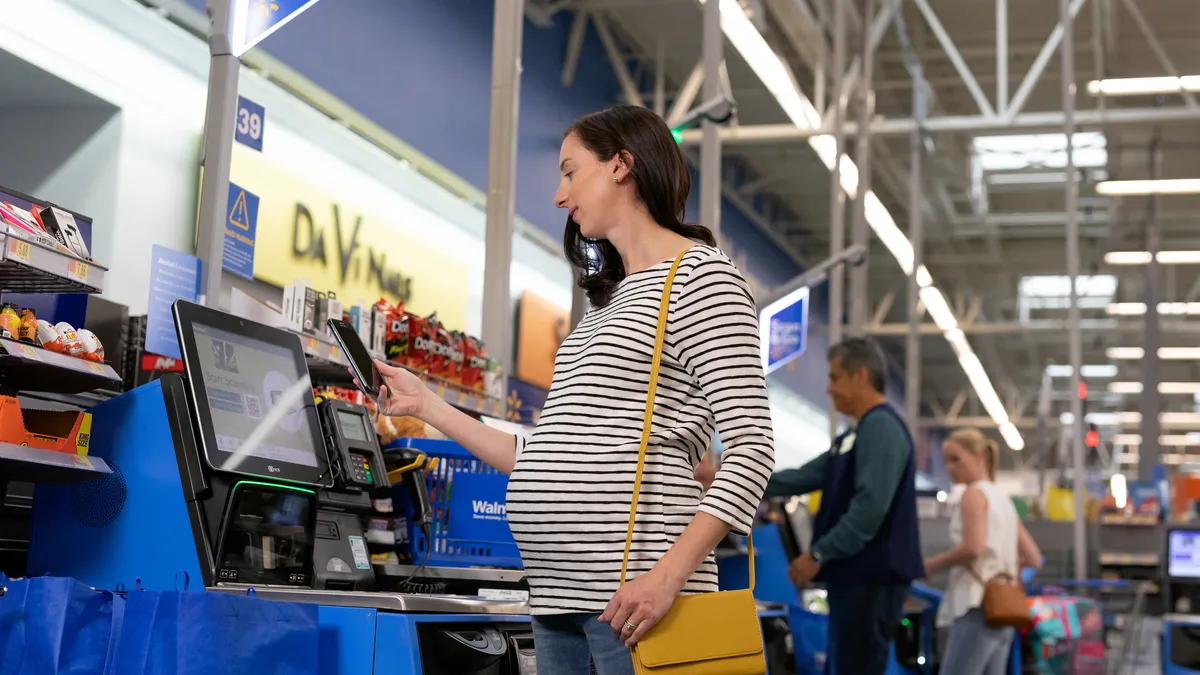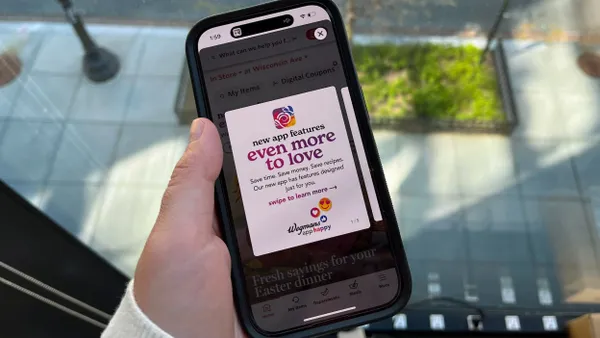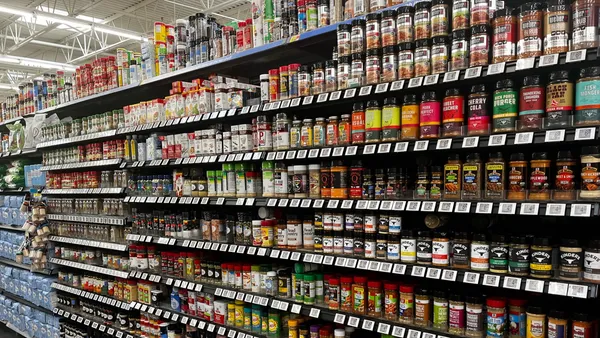Dive Brief:
-
Walmart is testing a self-checkout-only approach to processing purchases at a location in Fayetteville, Arkansas, in response to the coronavirus pandemic, the retailer told Fox Business News.
-
The store is replacing traditional cashier-run checkout lanes equipped with conveyor belts with self-checkout systems. The retailer wants to determine if adding more self-checkout lanes will decrease the amount of time if takes customers to make purchases while also cutting down on person-to-person interaction.
-
The retailer said employees will be able to assist customers with self-checkout and will be available to process groceries for people who don't want to do it themselves. Depending on shopper and employee feedback, the format could be expanded to more locations.
Dive Insight:
Grocers have been experimenting with new ways to expand self-checkout options in order to reduce the number of workers they need and speed up shopping times, but have had to contend with the risk of theft and customer frustration. However, the coronavirus pandemic may have reignited the self-checkout trend.
Checking out their own groceries may sound more appealing to shoppers because it promises to eliminate direct interaction with a cashier and bagger. It could also provide another layer of protection for its front-line employees by reducing face-to-face interactions with customers.
The risk of theft is still there, of course, but could potentially be reduced if Walmart has a sufficient number of employees keeping a close eye on self-checkout transactions.
However, user frustration may keep the format from expanding beyond one store. Shopper reviews of the test at the Fayetteville store on social media are a mixed bag, according to Today. While one customer raved about the ability to interact with fewer people, others complained about having to check out a full cart of products using a self-checkout system and the difficulty the equipment can pose to older shoppers.
“If they want you to self-checkout they need to pay me for working for them,” one person commented.
Self-checkout hasn’t always worked out in Walmart’s favor. Walmart has added thousands of machines to its stores, but to reduce friction the retailer has quietly disabled its weight sensors in order to cut down on “wait for assistance” messages that would annoy shoppers. Instead, retailers are relying on cameras and other technology to catch thieves.
Despite the risk of theft, Walmart continues to add more self-checkout stations as it remodels stores.
In January, Walmart opened a cashierless Neighborhood Market in Coral Way, Florida that features expanded self-checkout lanes for larger baskets and employees on deck to assist as needed. Last year, Sam's Club reopened a retail store inside a recently converted Tampa e-commerce warehouse that only accepts payments through the Scan & Go app. Walmart also has its "Check Out With Me" program, and grocery pickup and delivery options.
In March, the retailer announced it is launching no-contact payment service on its Walmart Pay app to let customers scan a QR code at when checking out to avoid touching the payment screen. Walmart also recently announced it would streamline its grocery and general merchandise apps to allow customers to shop online for everything using one application.
Not all of Walmart’s shelf-checkout endeavors have been successful. In May 2018, the retailer ended its Scan & Go program, which allowed customers to pay for items as they browsed the store and skip the checkout line.













